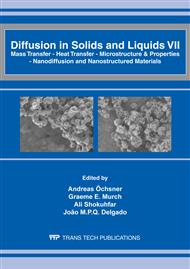p.181
p.187
p.193
p.199
p.205
p.209
p.215
p.221
p.227
Study and Interpretation of the Mass Transfer Phenomena through Textile Structures in the Wet State
Abstract:
In last decades, increased attention is paid to comfort properties of textiles and garments. The most important parameters characterizing the called physiological comfort of textile structures are the evaporative resistance and water vapour permeability. Contrary to common textiles, protective and functional garments and, also some technical textiles, are also used in wet state, which affect their comfort properties. In this paper, PERMETEST commercial instrument is described, which provide reliable non-destructive measurement of evaporative resistance and water vapour permeability of fabrics in dry and wet state. By means of this instrument, evaporative resistance and water vapour permeability of cotton, polyester and cotton/polyester knitting fabrics, in the wet state, were experimentally determined and results were discussed. The effect of count yarn and composition of the above mentioned properties of these fabrics has been investigated as well. Some surprising results were achieved: with increasing fabrics moisture, the water vapour permeability also increases, especially with the presence of hydrophilic textile material.
Info:
Periodical:
Pages:
205-208
Citation:
Online since:
April 2012
Authors:
Price:
Сopyright:
© 2012 Trans Tech Publications Ltd. All Rights Reserved
Share:
Citation:


